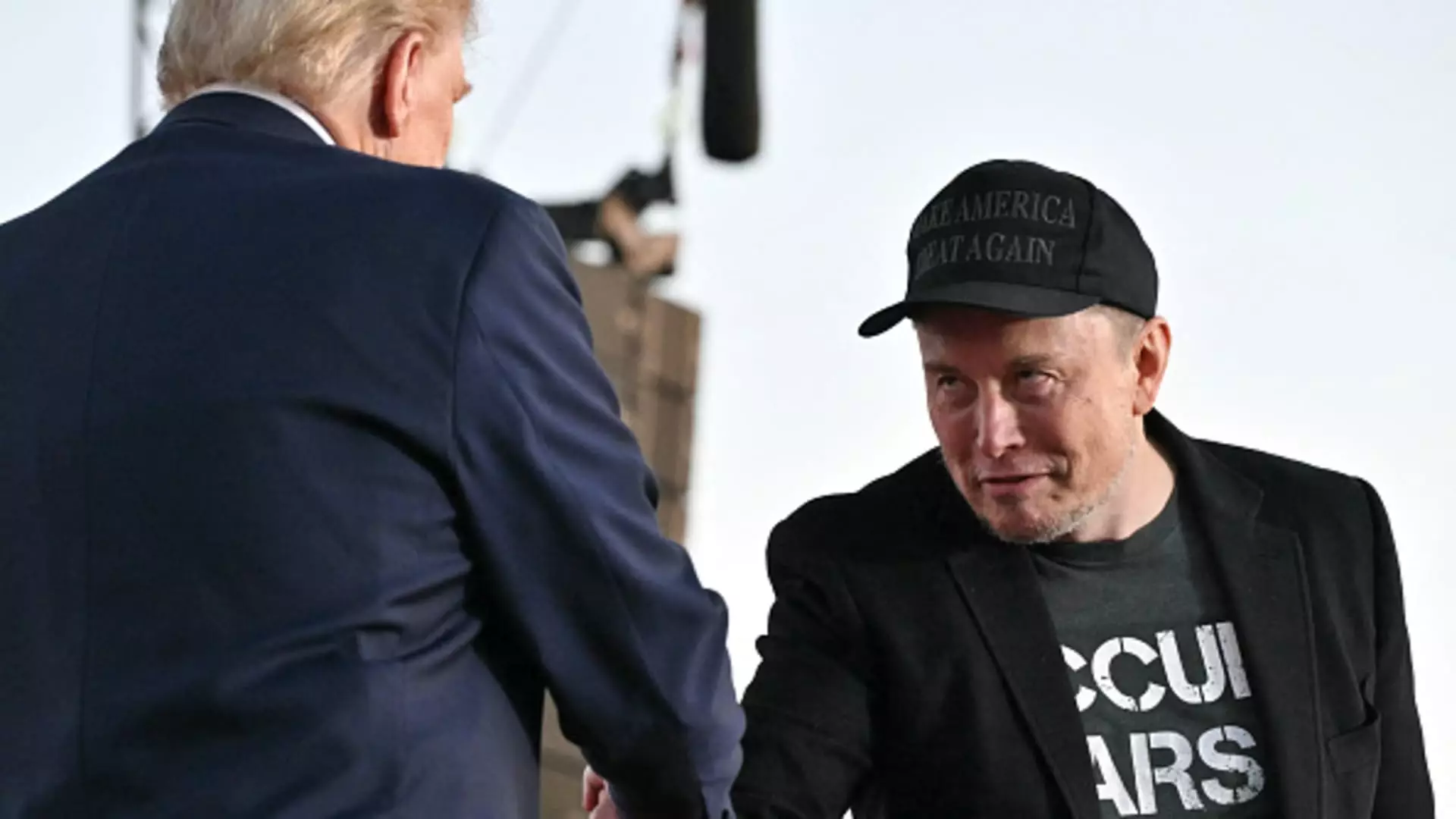Tesla Inc., a pioneer in electric vehicles and autonomous driving technology, has seen a significant surge in its stock price following news that President-elect Donald Trump’s transition team may prioritize the establishment of a federal framework for regulating self-driving vehicles. This potential shift in U.S. transportation policy could have profound implications for not only Tesla but the entire automotive industry as it navigates the complexities of self-driving technology.
The substantial rise of Tesla’s stock—an increase of nearly 8% in premarket trading—signals a bullish sentiment among investors who are optimistic about the future of autonomous vehicles. The report by Bloomberg News, which cited undisclosed sources, has triggered speculation of a cooperative relationship between the incoming administration and Tesla CEO Elon Musk. This financial uptick suggests that investors are closely monitoring political developments, recognizing that regulatory changes can dramatically influence market dynamics, especially in industries poised for rapid technological advancement.
Musk’s prominent involvement in advocating for Trump’s reelection underscores the importance of establishing robust relationships between technology leaders and policymakers. Musk’s appointment to lead the Department of Government Efficiency—an initiative aimed at reducing bureaucracy and regulatory burdens—further exemplifies this strategic alliance. The close ties between Musk and the new administration could facilitate smoother pathways for Tesla’s innovations to reach consumers without the delays that traditionally accompany regulatory reviews.
Moreover, this political relationship may also allow Tesla to maintain its competitive edge over rivals in the self-driving domain. The establishment of federal regulations could streamline processes for companies looking to innovate within the self-driving space, thus indirectly benefiting Tesla, which has invested heavily in developing its autonomous technology.
Tesla has made ambitious claims about the capabilities of its autonomous driving technology. The overarching vision includes the deployment of a fleet of “robotaxis,” vehicles that can transport occupants without human intervention. However, the company has yet to deliver a fully autonomous vehicle that meets these aspirations. The Cybercab prototype showcased by Musk provides a glimpse of what could be the future of urban transportation—compact, affordable, and devoid of traditional controls like steering wheels and pedals.
Contrastingly, competitor companies, such as Waymo, have made strides in launching self-driving car services. The emergence of competitive technologies signifies an urgent need for Tesla to accelerate its development timeline, particularly if it aims to dominate the future landscape of autonomous transport.
While the potential establishment of a regulatory framework for self-driving vehicles presents opportunities, it also poses challenges. The technology is still nascent, and there are considerable concerns regarding safety, liability, and ethical implications of autonomous driving. Government regulations may expedite the process of bringing these vehicles to market, but they must also address potential risks and ensure that public safety remains a priority.
The involvement of policy figures from various sectors, including former Uber executives, highlights the diverse perspectives needed to form a balanced regulatory approach. Their insights could help shape a framework that promotes innovation while safeguarding public interests.
The potential prioritization of self-driving vehicle regulations under a new presidential administration is a pivotal development for Tesla and the broader automotive industry. The financial implications are clear, yet the regulatory environment remains fluid and complex. As Tesla and its competitors continue to innovate, the interplay between technology and regulation will dictate the pace at which autonomous vehicles become a reality. As we move forward, it will be critical to monitor these developments to gauge how they will transform transportation and society as a whole. The journey towards fully autonomous driving is fraught with challenges, but with strategic guidance and regulatory support, it may not be as distant as it once seemed.


Leave a Reply